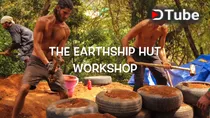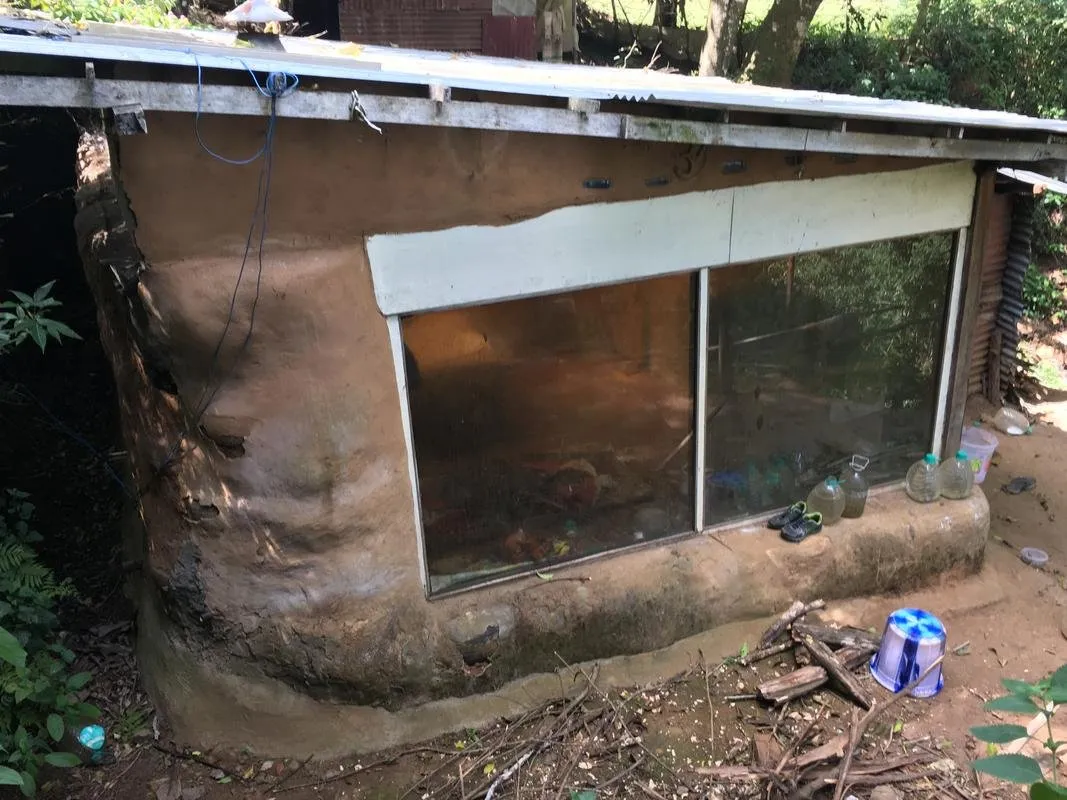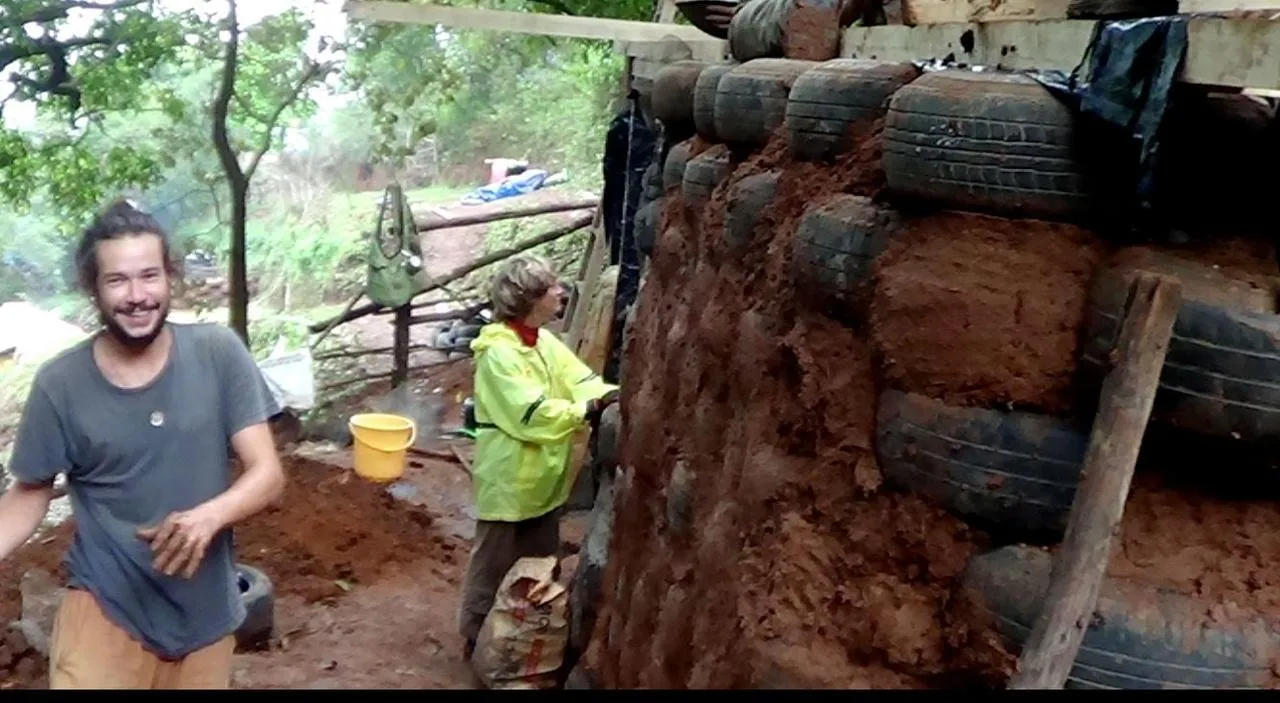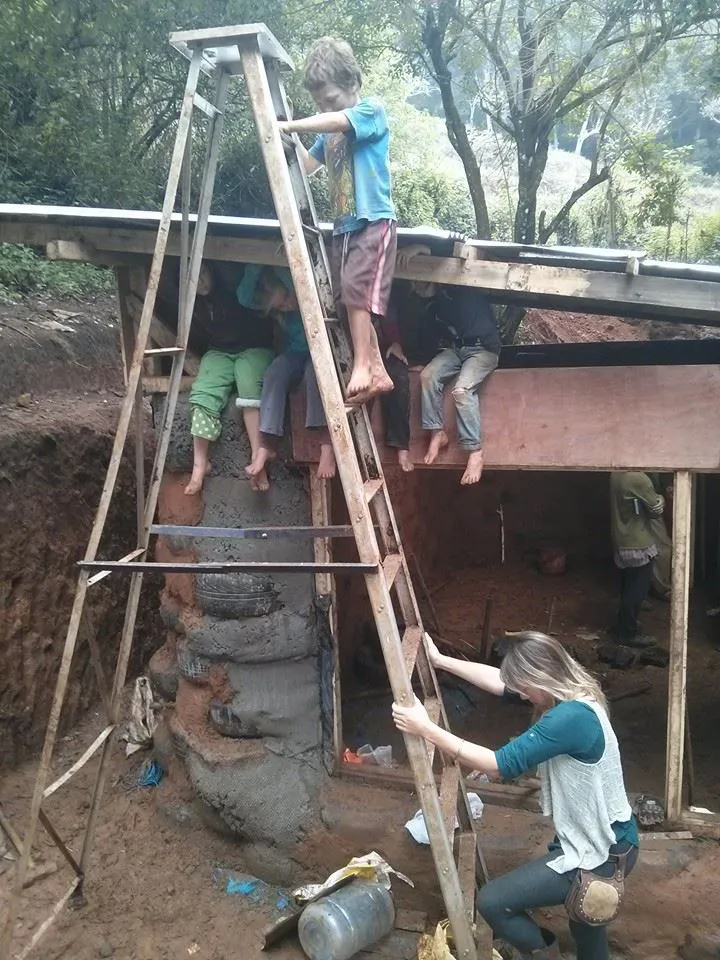

Welcome to this final instalment of the Earthship Hut Series! If you have just found this for the first time then please do read and enjoy, and then you can also read previous chapters. As anyone who has self built before can testify, it is hard and rewarding work. Many people take months and even years to self build, and yet we were able to have the roof on before everyone left, 2 weeks after starting from the ground up. The main reasons for this are:
1 We made a small home and kept things very simple
2. We used Earthship Biotecture techniques
3. We worked as a team of volunteers with good guidance.
I hope this final chapter will inspire you and show you that even in just TWO WEEKS we can achieve great things together.
Please watch this short clip to see the last few days highlights


The final few days were great fun, and also the most gratifying work. Since we chose to make this roof with metal sheets, it went up very quickly once @nature-jon and the team had finished the wood framework. The metal sheets actually went up in half a day with just a 'few' screws and some cordless screwdrivers. As long as the framing is done well and accurately, then the metal sheets should be very simple to add. The rest of the team were busy plastering the walls with cob. There are so many options for finishing, and the choice you make really does depend on what you prefer in terms of colour, longevity, cost etc. We went for the most simple and high maintenance option of mud, coconut hair (straw is normally used in cob) and water. I took a photo today, three years later and it is still in good shape!


Mud Plastering / Tyre Covering
You start covering the tyres with a cob or mud plaster very early on. It is the perfect job for people who are tired and want to do some mud mixing or filling the gaps between tyres. Its a very satisfying job as you get to start the transition of the building into something beautiful.
The bulk of the plastering is mixed with chopped up hay to help bind it and reduce cracking. We didn't have any hay, but had coconut hair instead. This was tough and strong and I was knew from experience that it worked well. So the idea was to all make a mix and we all took turns learning how to apply it. It's actually not so hard but you need the mix to be just right, and you need to rub the application well so that the binding happens. The main issue is usually cracking, which happens when there is not enough aggregate (sand), or too much clay, or too much water, or it dries too quickly! We don't mind some cracking on the first layers as the cracks help to make a surface for the binding of the next layer of mud. Its the final layer that I wanted a beautiful smooth finish. To achieve that we apply it very thinly and not too wet. We also sieved the mix before adding water for the final render. This gives the smoothest finish. Making a plaster that is suitable for plastering is something of an art-form to perfect. There are ways to make it much easier for yourself, especially if you don't have the right type of soil. On this occasion I had the perfect soil which contained clay and sand in good proportions.






I am writing this three years after building the Earthship hut, and it has provided warmth and comfort to many Nepali workers. We are used to having problems with dampness, cold, mold etc in their previous stone and mud hut, and this is a significant improvement. This building will last indefinitely, perhaps thousands of years. As you can see from the photos, the final finishing is wearing off since no one has maintained it and it was finished pretty roughly. Nevertheless, it is very functional, and a good example of how to build very cheaply.
I hope you were INSPIRED! Please do stick with me and follow me as my next and FINAL workshop is a really special one! I helped a very special man called Yogi Amitram In Rishikesh to build the first Earthship based Yoga Ashram up in the mountains. This was to be a large and grand building, and FAR from the last two tiny homes that we have made. This workshop was definitely one to remember for the rest of our lives! Stand by!!! Yogi Amitram was so keen to lean that he flew down and was a part of this Earthship Hut build. You can meet him here, as you can see, not your average bloke!


READ PREVIOUS POSTS
Days 6-10 - The Roof!
https://steemit.com/ecotrain/@eco-alex/the-earthship-hut-workshop-20-volunteers-usd5-000-and-2-weeks-days-6-10
DAYS 2-5.
Why tyres make the ultimate eco-building material and how to build with them
https://steemit.com/ecotrain/@eco-alex/the-earthship-hut-build-days-2-5-why-tyres-make-the-ultimate-eco-building-material-and-how-to-build-with-them
EARTHSHIP SELF BUILD WORKSHOP:
DAY 1 THE BEGINNING!
https://steemit.com/dtube/@eco-alex/vg77zlnm
The time has come for us to stop thinking and dreaming, and to start eco-building!
Just Do It! Watch This!
https://steemit.com/homesteading/@eco-alex/the-time-has-come-for-us-to-stop-thinking-and-dreaming-and-to-start-eco-building-just-do-it-watch-this

Thanks for being here with me and the #ecotrain!
We are a small community that support each other because we love what we write
about things that help make the world a better place

check our our ecoTrain magazine at @ecotrain
▶️ DTube
▶️ IPFS
